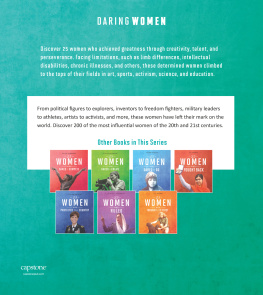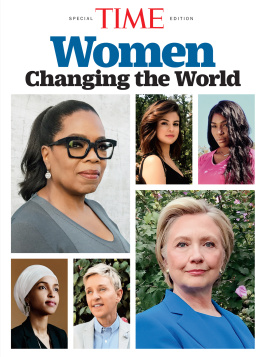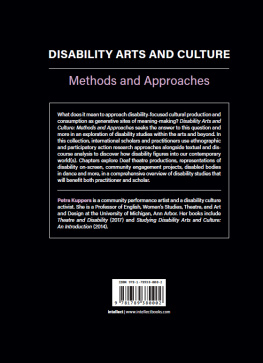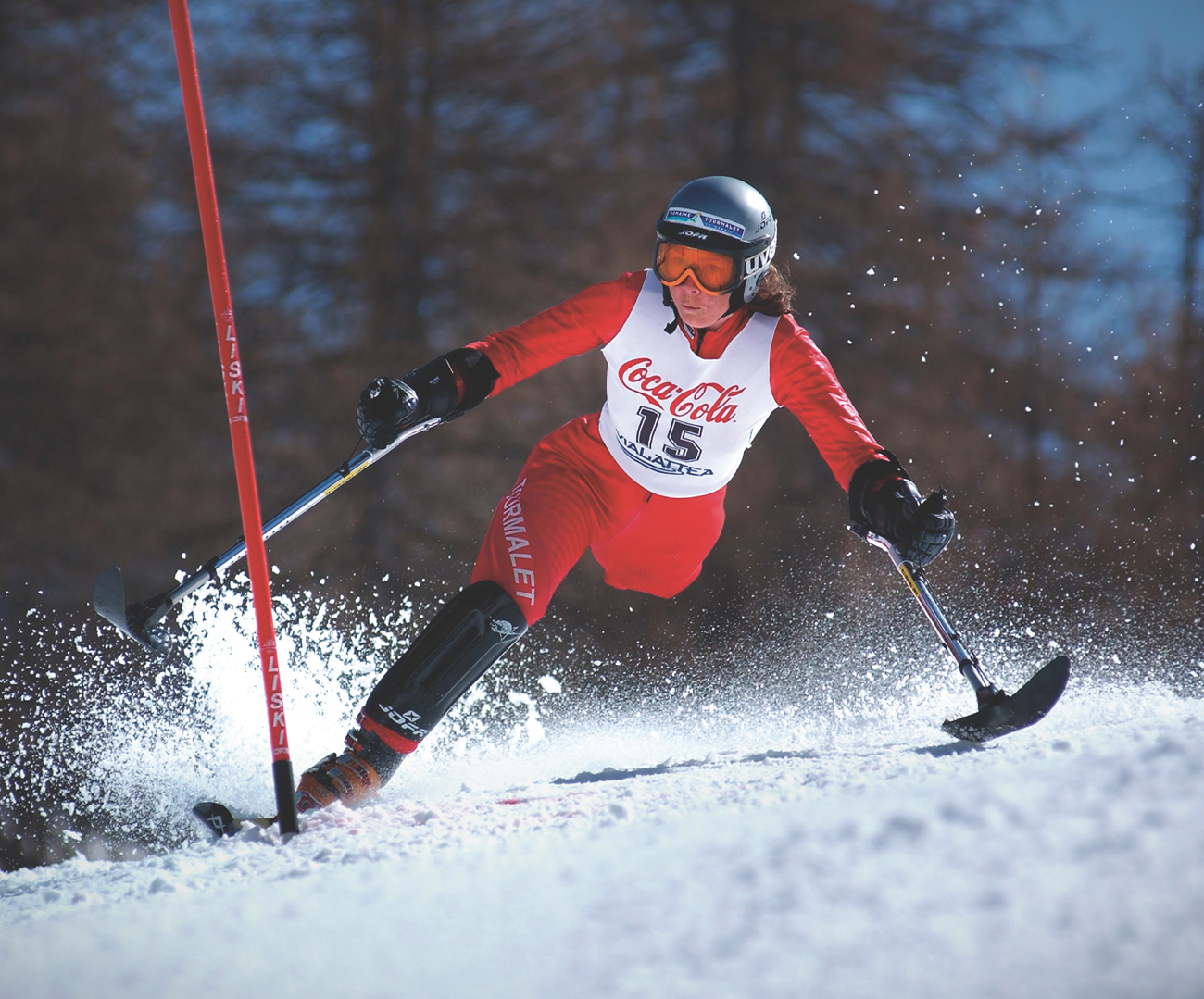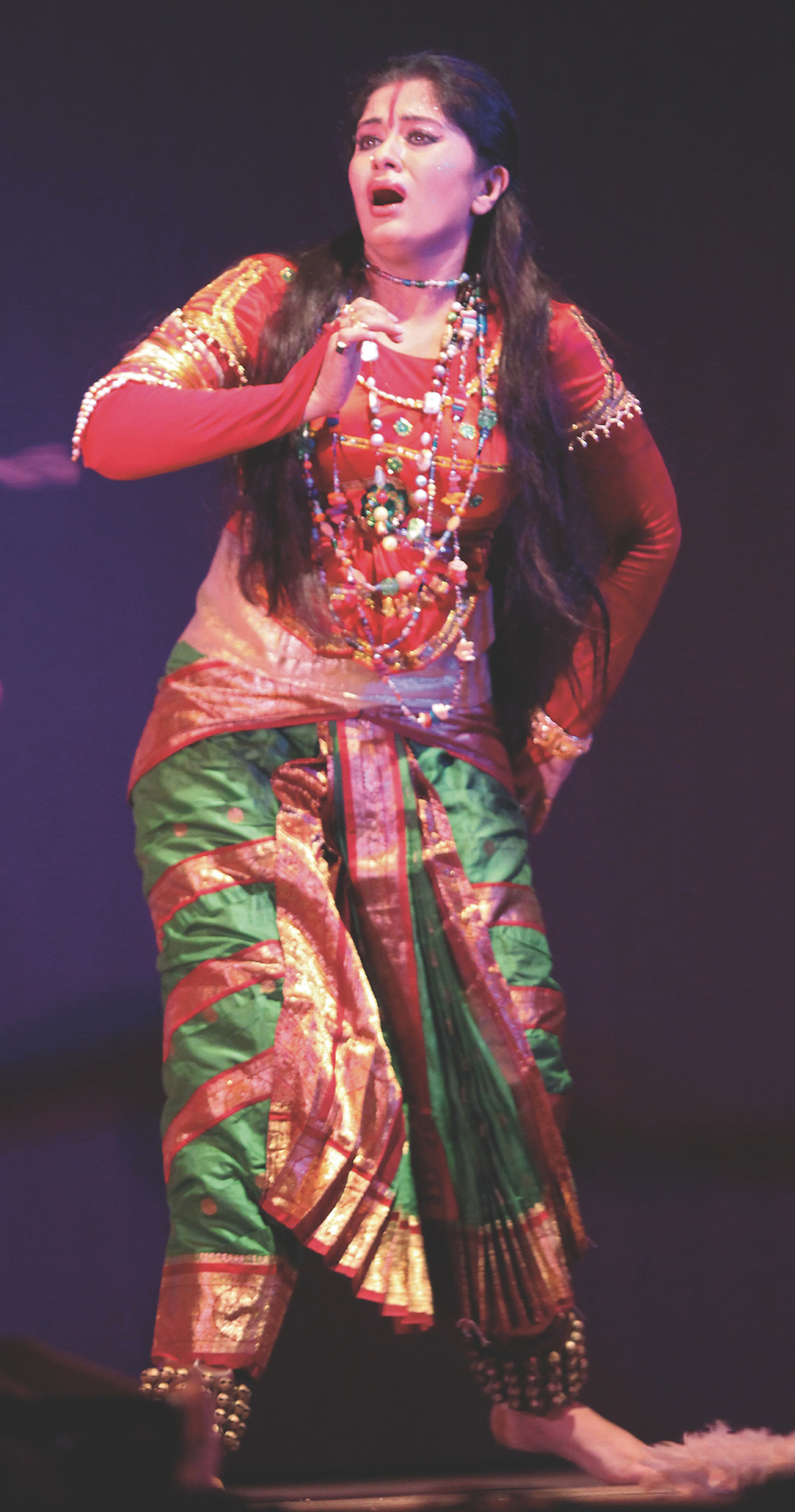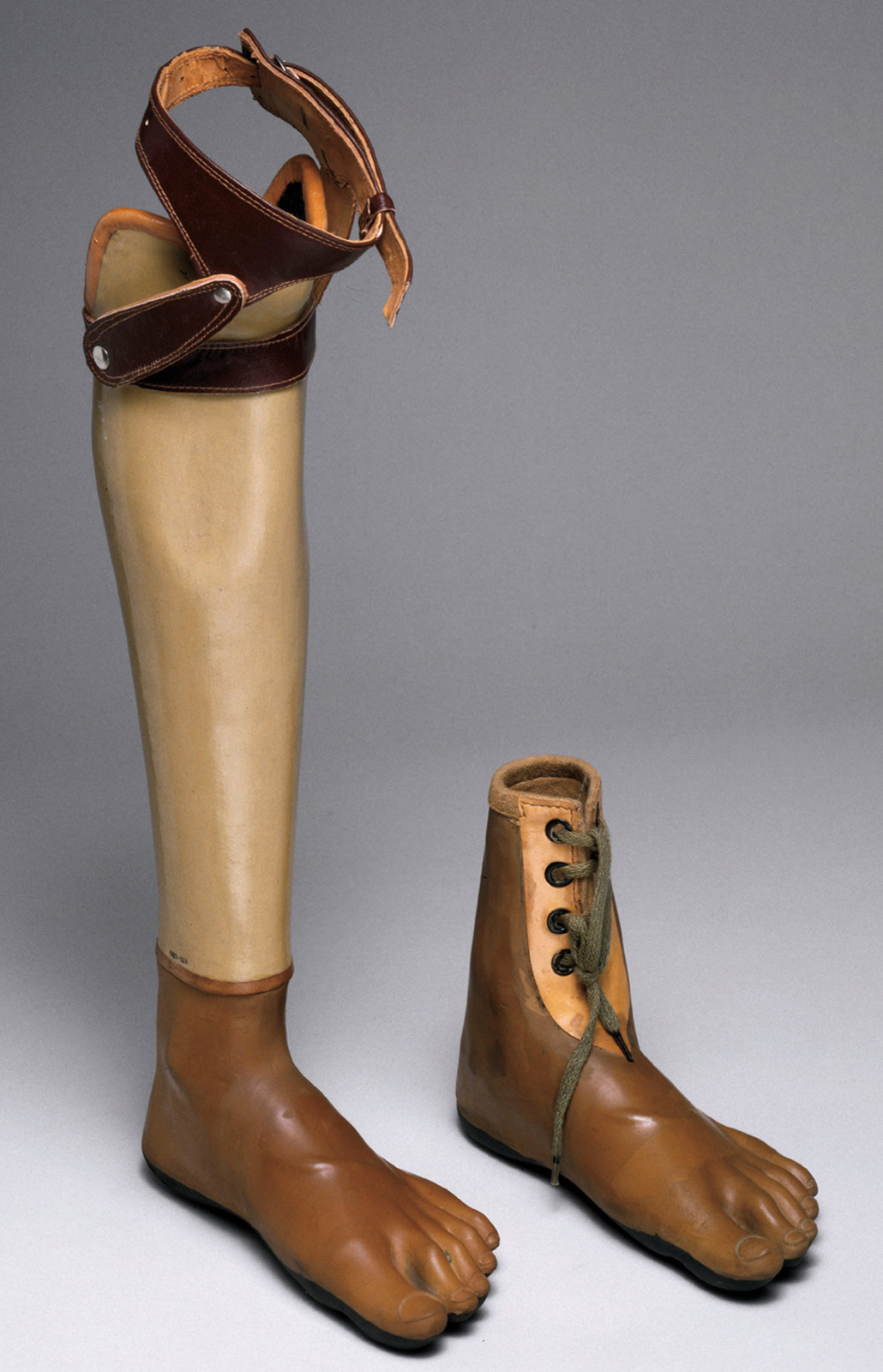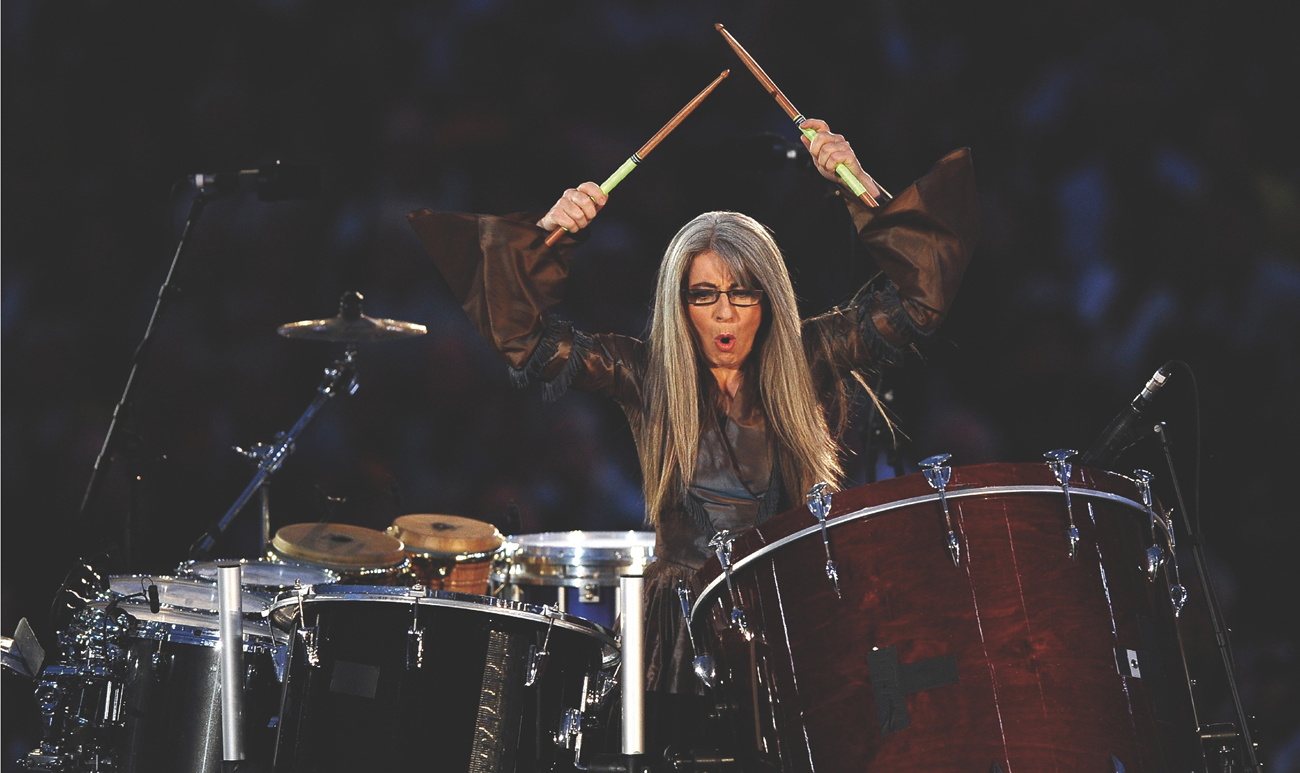INTRODUCTION
There are many ways to achieve greatness. Inventors and athletes, teachers and advocates, performers and lawmakerswhatever the field, it takes strength and perseverance to make your mark. But historically, women have not always been allowed or encouraged to do this. Women with disabilities or limitations may not have had the resources they needed to reach their potential. And yet, women have risen to the challenge. Women with limitations have earned Oscars and Grammys. Theyve won Olympic races and surfed big waves. Theyve spearheaded movements for justice and developed scientific breakthroughs. Some are visually impaired. Some have intellectual disabilities. Some use a wheelchair. These women have worked for their achievements and have helped pave the way for others. Their achievements can inspire us to change our world as well.
Athletes with physical limitations compete in every imaginable sport, sometimes with the aid of special equipment.
I think the main problem we face is the tendency to see disability as a single-issue struggle, which it is not. Disabled people are a diverse group of individuals with different backgrounds and identities and they are a part of every single aspect of each society.
Freyja Haraldsdttir, Icelandic disability-rights activist
Chapter 1
ARTISTIC ACHIEVEMENTS
Women who create art, music, or dance make their living expressing themselves. They bring their life to their art. For women with disabilities, that sometimes includes speaking up and speaking out about what its like to live with a limitation. Their artistry is informed by their disability, not defined by it. Our world is better and more beautiful because of artists who are willing to share their talent and passion.
Frida Kahlo (19071954)
Frida Kahlo was one of the worlds most famous women artists of the 1900s, yet she spent most of her adult life in pain. Kahlo endured more than 30 surgeries, and she used a wheelchair during the last years of her life. But Kahlo found inspiration in her pain and limitations rather than letting them beat her down.
Frida Kahlo, 1944
Kahlo was born into a middle-class family in Coyoacn, Mexico. In 1925, when she was 18, she was in a horrific bus and streetcar accident that left her with a permanently injured leg, pelvis, and spine. She was in a body cast during her long recovery. Some scholars believe that Kahlos desire to create art stemmed from her need to express how much pain she was in during her lifein a sense, the accident made her an artist.
Kahlo found her artistic and life partner when she married the well-known Mexican painter Diego Rivera in 1929. Lifelong members of the Communist Party, Kahlo and Rivera were intensely political. They traveled the world together while Rivera painted works inspired by his political beliefs and Kahlo painted deeply personal pictures. They eventually settled in Kahlos childhood home, Blue House.
There Kahlo produced striking, sometimes disturbing, paintings that depicted her disabled body and the pain she continued to endure. She often had to wear body casts and braces to support her injured spine and leg. Kahlo would decorate and paint on the casts, using them as another canvas. At the end of her life, Kahlo was limited to her bed and wheelchair because her leg had been amputated. But she continued her artistic and political work, hosting the first exhibition of her art in Mexico while lying in her four-poster bed.
Kahlo died at age 47 on July 13, 1954, leaving behind a legacy of fierce artistic expression.
Sudha Chandran (1965 )
Sudha Chandran on stage in 2010
The actor Sudha Chandran is sometimes called the woman who dances on the Jaipur Foot. The Jaipur Foot is the leg Chandran uses because of an injury from a traffic accident.
Chandran was born in the region of southern India called Kerala. She began studying traditional dance when she was only 3 years old. It was the beginning of a lifelong passion. She danced every day after school, often until late in the evening.
In 1981, Chandran was in a bus accident that fractured her right leg and caused a few cuts. Ordinarily, this would be a relatively minor injury, but Chandrans cuts were not properly cleaned by the medical staff that tended to her. The cuts became infected, and . Her lower leg was amputated to save her life.
Chandra recuperated for six months in the hospital. She was fitted with a painful and poorly made artificial lower leg. Nonetheless, she learned to stand and to walk straight.
But when Chandran left the hospital, she heard of a different prostheticthe Jaipur Foot. This simple artificial leg and foot was a revolutionary inventionpeople all over India could afford it, it was comfortable, and it worked. Chandran was fitted for her Jaipur Foot. She had three more years of physical therapy.
Chandran burned with the desire to dance again. After more than two years of hard work, she did. Chandran performed at Indias St. Xavier College to a sold-out audience. She received a standing ovation. From there, she went on to appear in countless movies and dance performances in India. She founded the Sudha Chandran School of Dance and is the vice-chairperson of Indias National Association of Disabled Enterprises. She still wears her Jaipur Footand she still dances.
THE JAIPUR FOOT
The Jaipur Foot was named after the city in which it was invented. It revolutionized the world of prosthetic limbs when it was designed by surgeon Pramod Karan Sethi and craftsman Pandit Ram Chandra Sharma in 1968. It was simple, without too many parts that could break, and it was made of rubber, wood, and plastic rather than carbon fiber. This made it very inexpensive. It cost just $45 to make, which made it affordable for people around the world. The Jaipur Foot was flexible, which made it comfortable, and it could be used without shoes.
Evelyn Glennie (1965 )
Does a musician need to be able to hear? Evelyn Glennie would answer an emphatic No! to that question. Glennie has a hearing impairment. She began losing her hearing at age 8 from nerve damage, and by age 12 she was almost completely Deaf.
Evelyn Glennie performed at the opening ceremony of the 2012 Olympic Games.
But Glennie was also deeply, innately, a musician. As a child in Aberdeen, Scotland, Glennie played the piano and the clarinet. But when her hearing loss was nearly complete, she became a percussionist.
Percussionists use instruments that are beaten, shaken, rattled, or scraped. Glennie found that she could feel the vibrations of the drums and other instruments, which helped her sense their sound. I would stand with my hands against the classroom wall while [my teacher] played notes on the timpani,hear their pitch and to perform barefoot so she can sense vibrations through her feet. By the time she was 16, Glennie was accomplished enough to be accepted into the Royal Academy of Music.

